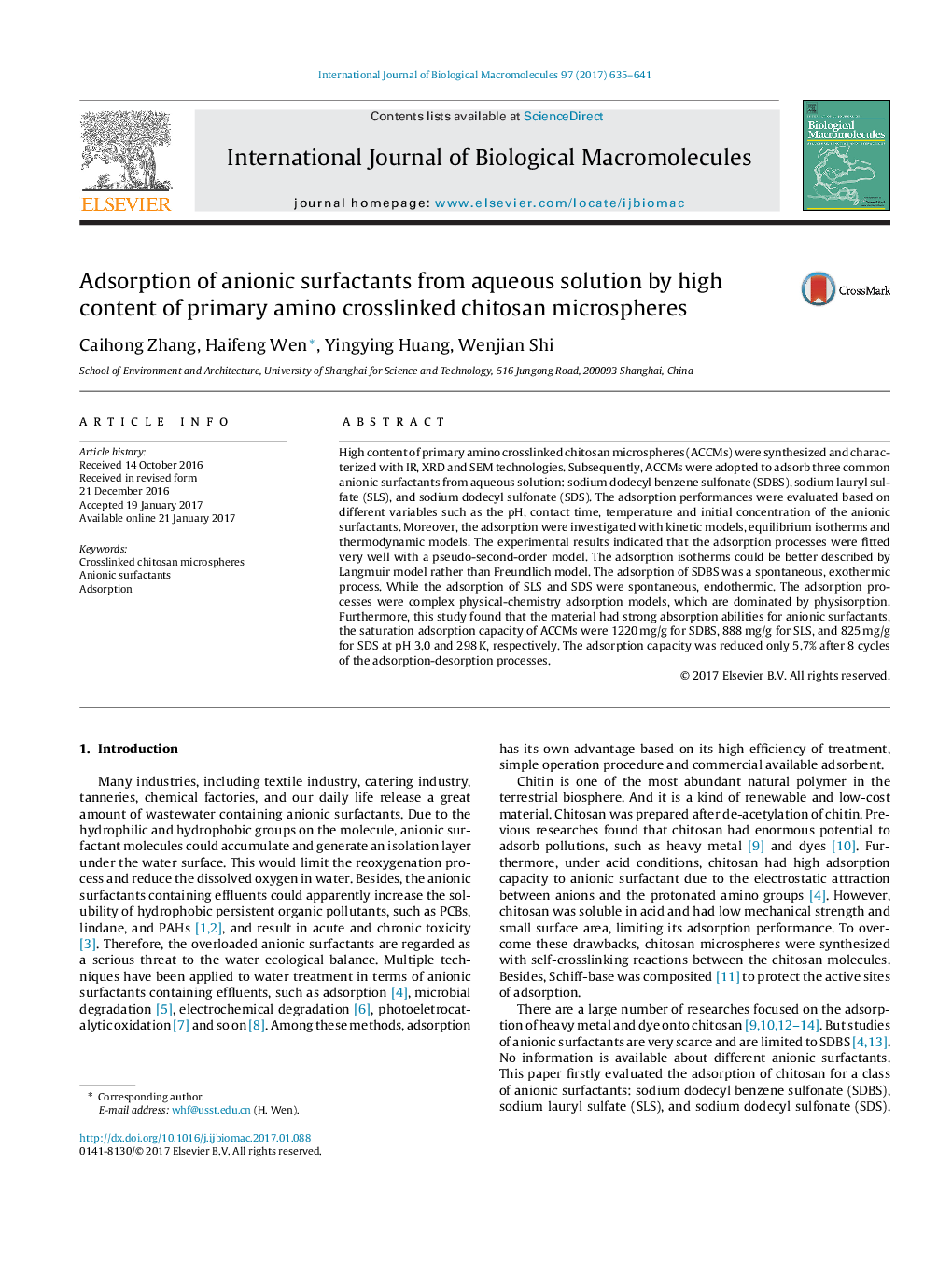| Article ID | Journal | Published Year | Pages | File Type |
|---|---|---|---|---|
| 5512640 | International Journal of Biological Macromolecules | 2017 | 7 Pages |
Abstract
High content of primary amino crosslinked chitosan microspheres (ACCMs) were synthesized and characterized with IR, XRD and SEM technologies. Subsequently, ACCMs were adopted to adsorb three common anionic surfactants from aqueous solution: sodium dodecyl benzene sulfonate (SDBS), sodium lauryl sulfate (SLS), and sodium dodecyl sulfonate (SDS). The adsorption performances were evaluated based on different variables such as the pH, contact time, temperature and initial concentration of the anionic surfactants. Moreover, the adsorption were investigated with kinetic models, equilibrium isotherms and thermodynamic models. The experimental results indicated that the adsorption processes were fitted very well with a pseudo-second-order model. The adsorption isotherms could be better described by Langmuir model rather than Freundlich model. The adsorption of SDBS was a spontaneous, exothermic process. While the adsorption of SLS and SDS were spontaneous, endothermic. The adsorption processes were complex physical-chemistry adsorption models, which are dominated by physisorption. Furthermore, this study found that the material had strong absorption abilities for anionic surfactants, the saturation adsorption capacity of ACCMs were 1220Â mg/g for SDBS, 888Â mg/g for SLS, and 825Â mg/g for SDS at pH 3.0 and 298Â K, respectively. The adsorption capacity was reduced only 5.7% after 8 cycles of the adsorption-desorption processes.
Keywords
Related Topics
Life Sciences
Biochemistry, Genetics and Molecular Biology
Biochemistry
Authors
Caihong Zhang, Haifeng Wen, Yingying Huang, Wenjian Shi,
